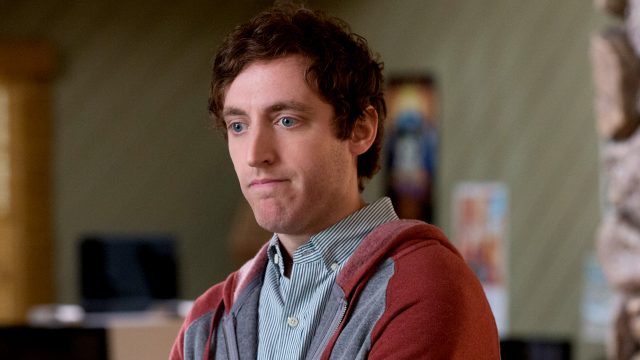Silicon Valley writer: The show’s lack of diversity is accurate


AUSTIN, Texas—During the first season of HBO's Silicon Valley, the megalomaniac CEO of the search giant Hooli offers protagonist Richard Hendricks (Thomas Middleditch) $10 million for his still-nascent startup, Pied Piper.
The initial script called for a much bigger offer, but show creator Mike Judge thought that was over the top.
Judge said, "that's too much, no one is going to buy that it's $100 million," Middleditch said at a South By Southwest panel on Saturday featuring Judge, writer and producer Alec Berg, and several of the show's stars. "So we turned it down to $10 million, and then during season one the news came out about Snapchat turning down that offer of five or six billion, so, egg on our face, I guess." (The offer from Facebook was actually $3 billion.)
"Yeah, the tech world kept getting crazier and crazier during the time the show came out," Judge agreed. "TJ Miller [who plays Pied Piper co-owner Erlich] had some line about someone owning 10 percent of Grindr, and then we realized if we had a character who owned even a little of that, he'd be insanely rich."
"I like how old money used to be Rockefellers," said Middleditch. "In 100 years, there will be some Little Lord Fauntleroy who's like, 'Yeah, my money is from Grindr. We had to toil and sweat to find out who was DTF in a 100-mile radius! You kids have it so easy!'"
The show had plenty of techies, many of them well off C-suite types, willing to give advice. Some of them reflected the Valley ethos in a way that the show poked fun at.
"We had one guy on the set, and he had this long website about how he was helping to make humanity thrive," said Berg. "It turned out, he made some kind of enterprise to-do list."
There's an issue lurking behind the show's success—and it's the same one that faces the real Silicon Valley. The show is overwhelmingly white and male, especially in the first season, where the only "diversity" comes from one South Asian programmer and a female VC.
Berg said they're not shying away from the issue at all. They're just reflecting the valley as they see it.
"We shot some crowd footage at Disrupt," the real TechCrunch conference that fictional Pied Piper competes in, he said. "I have a friend in tech who called me, and she said, 'Those crowd shots are absurd, you didn't put any women in there at all.' I had to tell her—those were real shots. The world we're depicting is fucked up. Do we have a responsibility to make the genders on our show more balanced, when this is the world we're depicting?"
When an audience member asked about the diversity of the show's writing room, Berg took a different tack.
"I think we've done a mildly decent job of hiring female writers, and writers of color," he said. "Fifty percent of the outside writers we hire are women. We're not there yet, but I swear, we are trying."
It was clear from the conversation that the writers and actors who are poking fun at Silicon Valley aren’t exactly in love with the region.
Judge was asked by an audience member if he ever visited incubators or bars in Palo Alto to do research for the show.
"Yeah, that's where I realized that it was 87 percent dudes," he said. "I've spent a bunch of time there. It's kind of the no-humor capital of the world. I watched the Naked Gun there and I was the only one laughing. But I shouldn't bag on it. There are very intelligent people there."
"If you're a fan of Birkenstocks and socks, and a nice pullover fleece, you'll fit right in," said Middleditc

